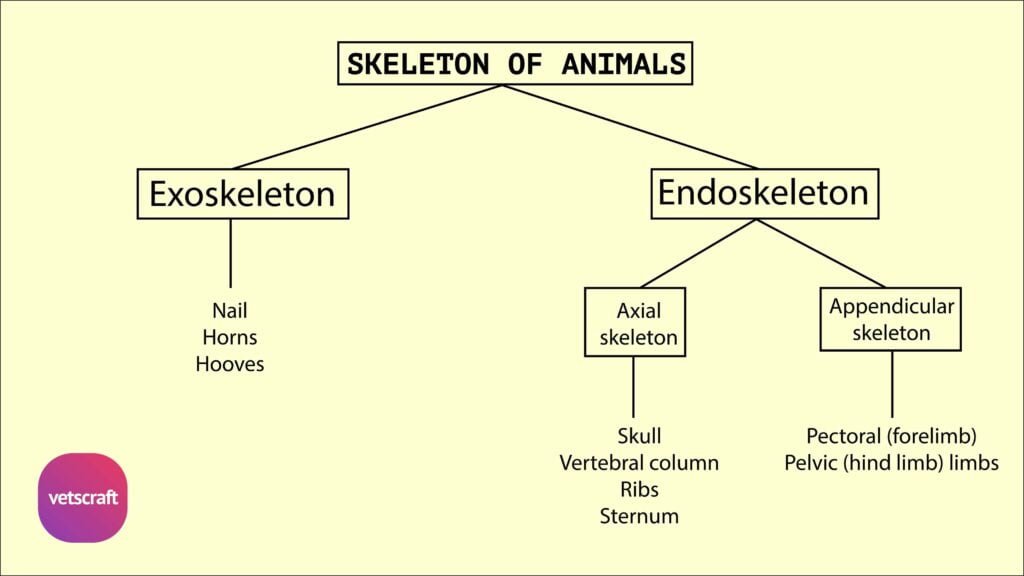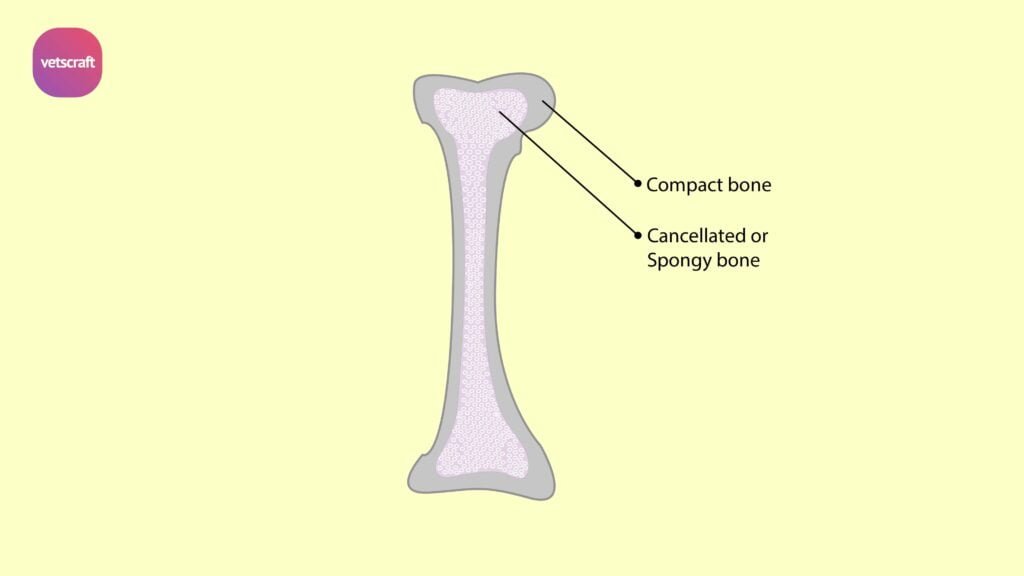TABLE OF CONTENTS
Comparative Anatomy of Forelimb Phalanges in Domestic Animals: Ox to Fowl
Phalanges of the forelimb in animals refer to the series of small long bones forming the digits (fingers or toes) of the forelimb.
In domestic animals like ox, horse, dog, pig, rabbit, and fowl, these bones are arranged typically in three segments—proximal (first), middle (second), and distal (third) phalanges—which vary in number, shape, and size depending on the species and digit.
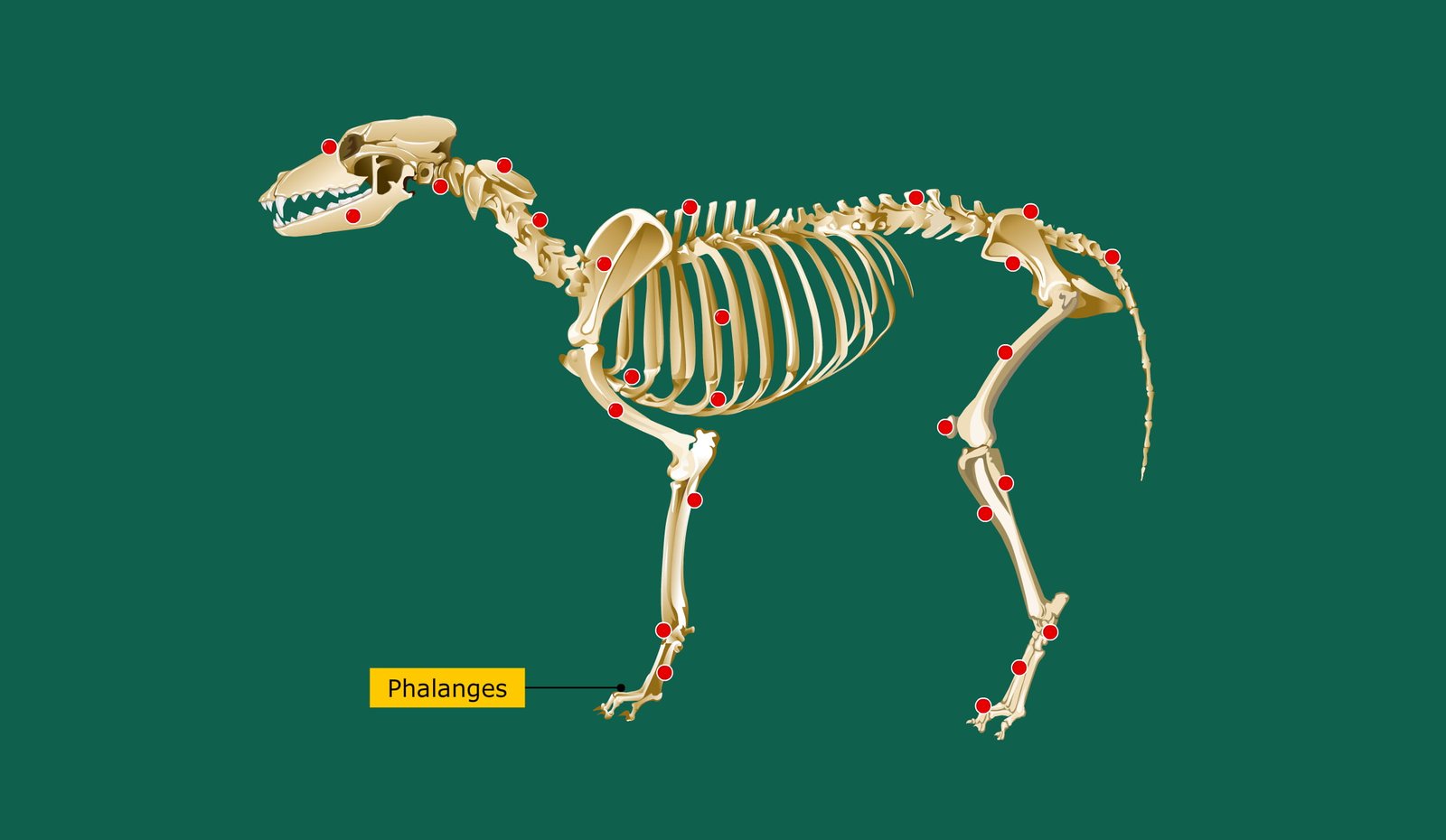
Phalanges of Forelimb of Ox
First Phalanx (Os Suffraginis)
The phalanges of the forelimb in the ox are long bones placed obliquely downward and forward between the large metacarpal above and the second phalanx below. The shaft is four-sided.

The dorsal face is convex and blends with the abaxial surface. The volar face is flat and presents two tubercles, one on either side near the middle of its borders, for ligamentous attachment. The axial face is flat.

The proximal extremity is larger than the distal. Its articular surface is divided by a sagittal groove into two areas (the abaxial being the larger and higher), which articulate with the distal end of the large metacarpal. Behind these are two facets for the proximal sesamoids. On the volar aspect, there are two tubercles for ligamentous attachment.
The distal extremity is smaller. Its articular surface is divided by a sagittal groove into two condyles (the abaxial being the larger), which articulate with the proximal extremity of the second phalanx.
Second Phalanx (Os Coronae)
The second phalanx (os coronae) is a long bone positioned obliquely downward and forward between the first and third phalanges. The distal half of each is enclosed within the hoof.
The shaft is three-sided. The volar face is encroached upon by the distal articular surface. The abaxial face is rough, while the axial face is flat.
The proximal extremity consists of two glenoid cavities, the abaxial of which is larger. The volar aspect presents two tubercles for the attachment of the superficial flexor tendon.
The distal extremity is smaller and is divided by a sagittal groove into two condyles, the abaxial being the larger. It articulates with the superior surface of the third phalanx below and the distal sesamoid behind.
Third Phalanx (Os Pedis)
The third phalanx (os pedis) is a short bone entirely enclosed within the hoof. It presents four surfaces and an angle.
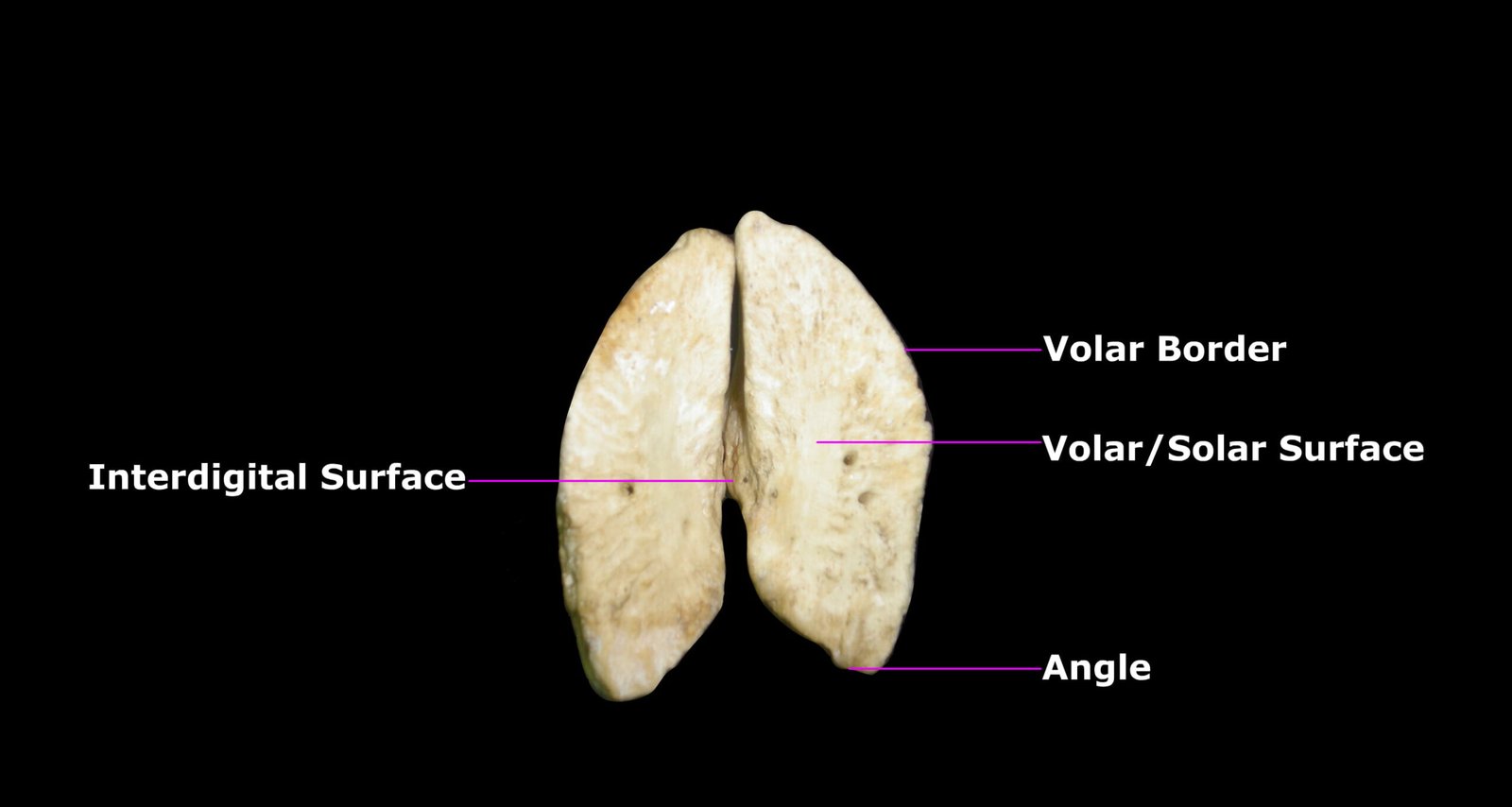
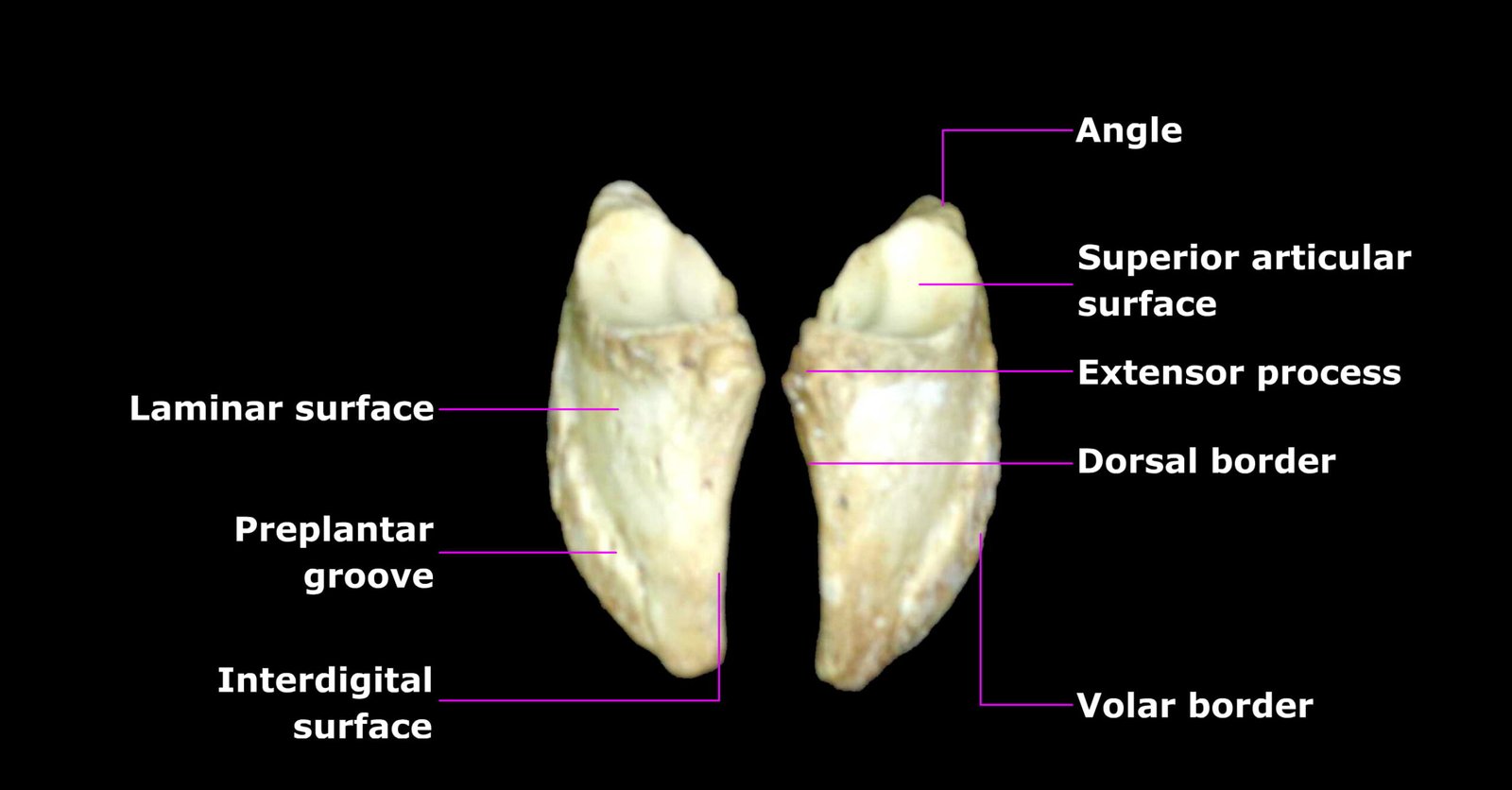
The superior face is articular and presents two areas for articulation with the distal extremity of the second phalanx, along with a small facet along the volar border for the distal sesamoid.
The inferior face, or solar surface, is nearly flat—wide in the middle and narrowest at the front. It is in contact with the sensitive sole in life.
The interdigital surface is smooth and grooved below, and rough and porous above. It presents a large foramen near the extensor process, known as the volar foramen.
The laminar surface slopes downward from above and becomes steeper posteriorly. Distally, it is traversed by the pre-plantar groove, which contains several foramina—the most posterior of which is the largest. This surface is covered by the sensitive lamina in life. At the extreme upper part of the dorsal border is the extensor process, for attachment of the common digital extensor. The volar border is thickened to allow for the attachment of the deep digital flexor tendon. The angle is a blunt process located at the extreme posterior part of the laminar surface.
Comparative Anatomy of Forelimb Phalanges
Comparative anatomy of forelimb phalanges in various domestic animal species:
Sheep and Goat
The phalanges of the forelimb in sheep and goats are similar to those of the ox.
Horse
Each phalanx appears like the combined corresponding phalanges of the ox. The first phalanx, the volar face presents a “V”-shaped area beginning from the proximal tuberosities and converging distally, which furnishes attachment to the distal sesamoidean ligament. The proximal face is articular and is divided by a sagittal groove into two concave areas, the medial being the larger. The lateral face bears tubercles.
The second phalanx is a short bone, being more wide than long.
The third phalanx has three surfaces, three borders, and two angles. The superior articular surface is adapted to the distal extremity of the second phalanx and distal sesamoid. The volar face is divided by the semilunar crest into a larger concave solar surface and a smaller semilunar flexor surface. The latter presents a central prominent area, on either side of which is the volar foramen, which leads into the semilunar canal within the bone.
The crest and the prominent area furnish attachment to the deep flexor tendon. The antero-superior or coronary border bears, about its middle, the extensor process or the pyramidal process for the common extensor tendon. The postero-superior border is nearly straight and forms the posterior limit of the superior articular surface. The distal border is irregularly notched, with a wider notch in front. The angles or wings project backward and are divided into upper and lower parts by a notch or a foramen. The proximal border of the angle carries the cartilage of the third phalanx.
Pig
Each digit has three phalanges in the forelimb of the pig. The phalanges of the third and fourth digits are well developed.
The phalanges of the second and fifth digits are small and generally do not reach the ground. There are two proximal and two distal sesamoid bones in each digit.
Dog
The first digit has two phalanges, and the other digits have three phalanges each in the dog. The first phalanges of the chief digits have four-sided shafts, and the second phalanges are about two-thirds the length of the first phalanges. Their distal extremities are wider and flatter than those of the first.
The third phalanges correspond to the shape of the claws, and the proximal face or base articulates with the second phalanx. It is encircled by a collar of bone, with which it forms a groove into which the proximal border of the claw is received.
Rabbit
The first digit has two phalanges, and the remaining four digits have three phalanges each in the rabbit. All the third phalanges bear horny claws.
Fowl
The first and second digits have two phalanges each in the fowl. The third has only one phalanx.
